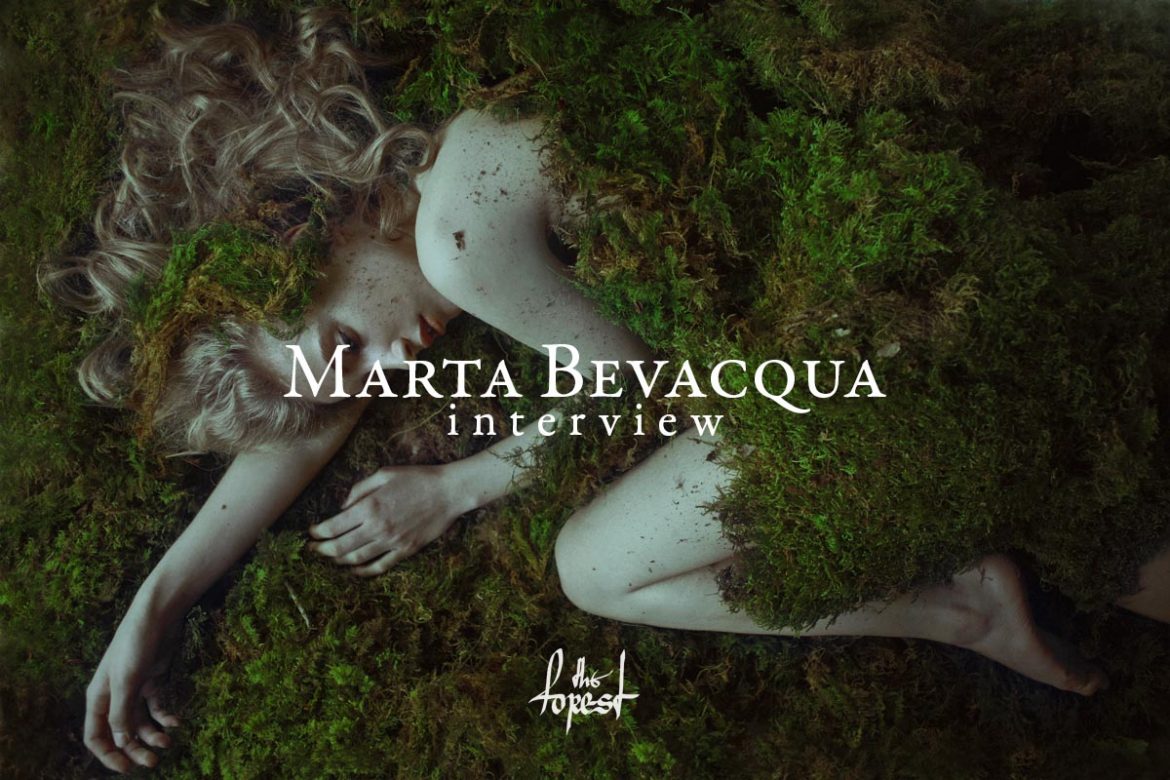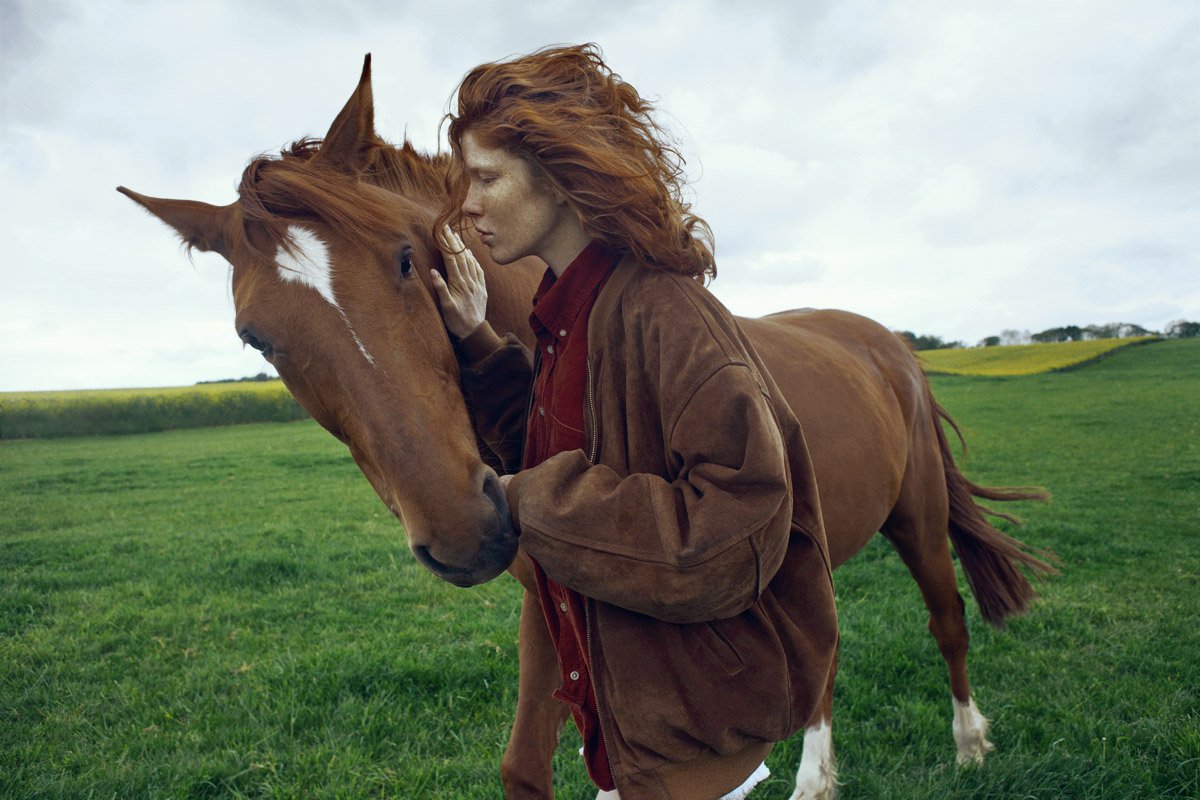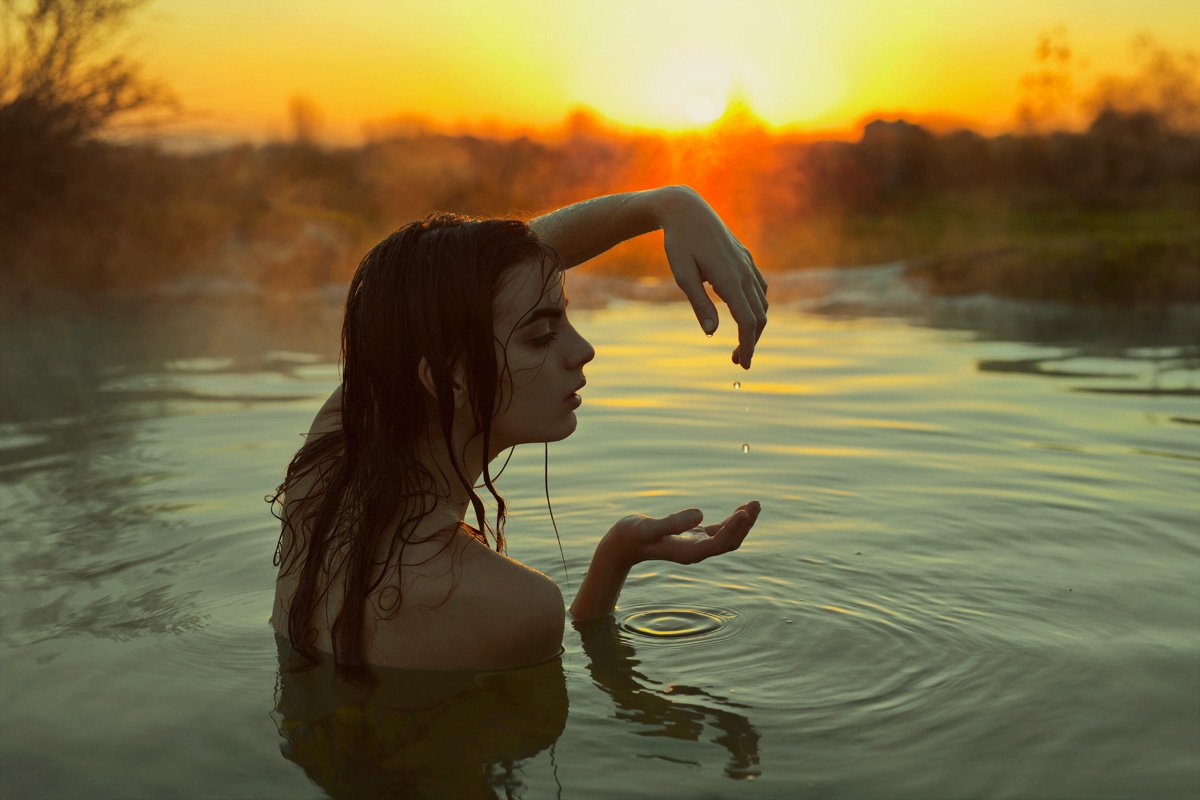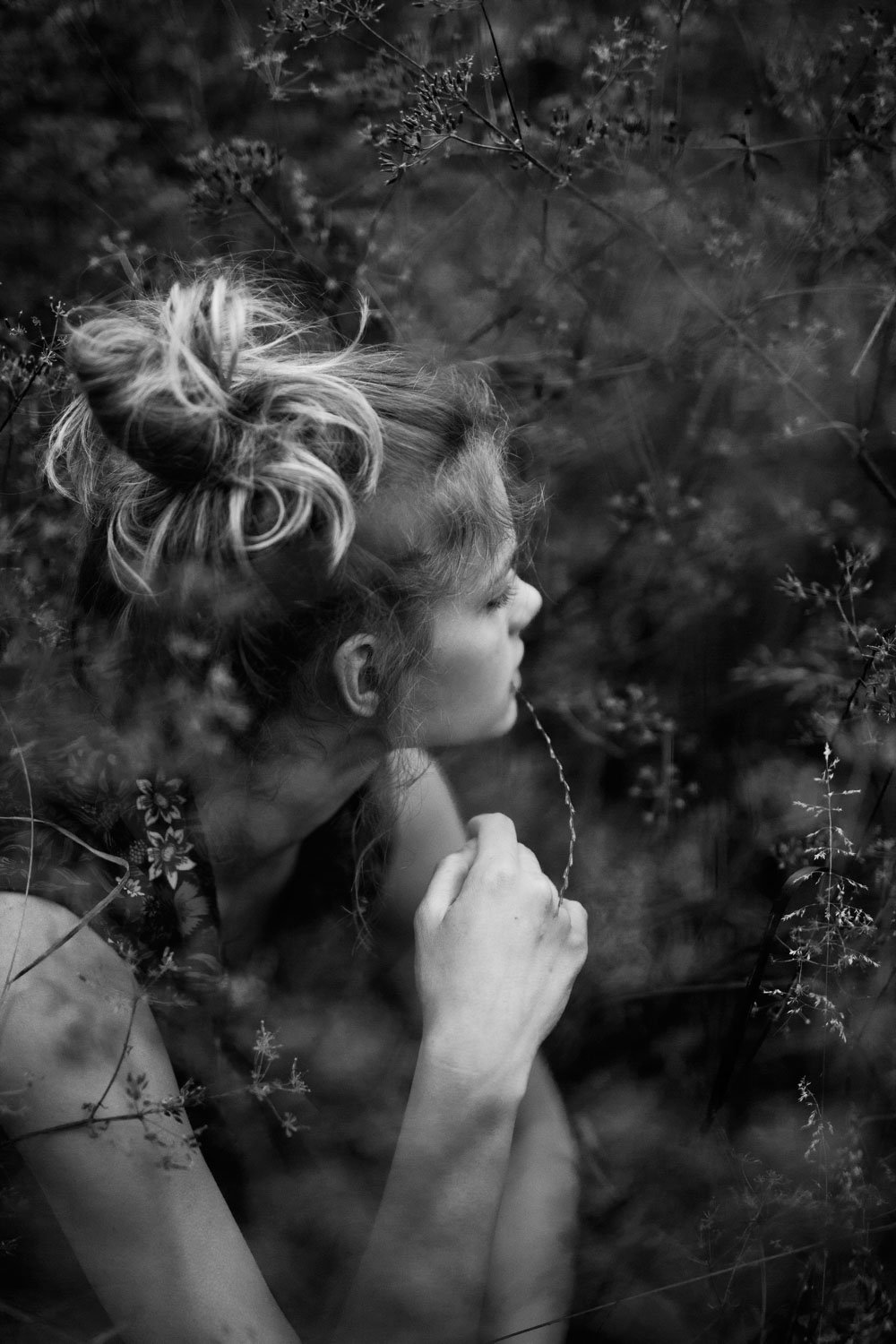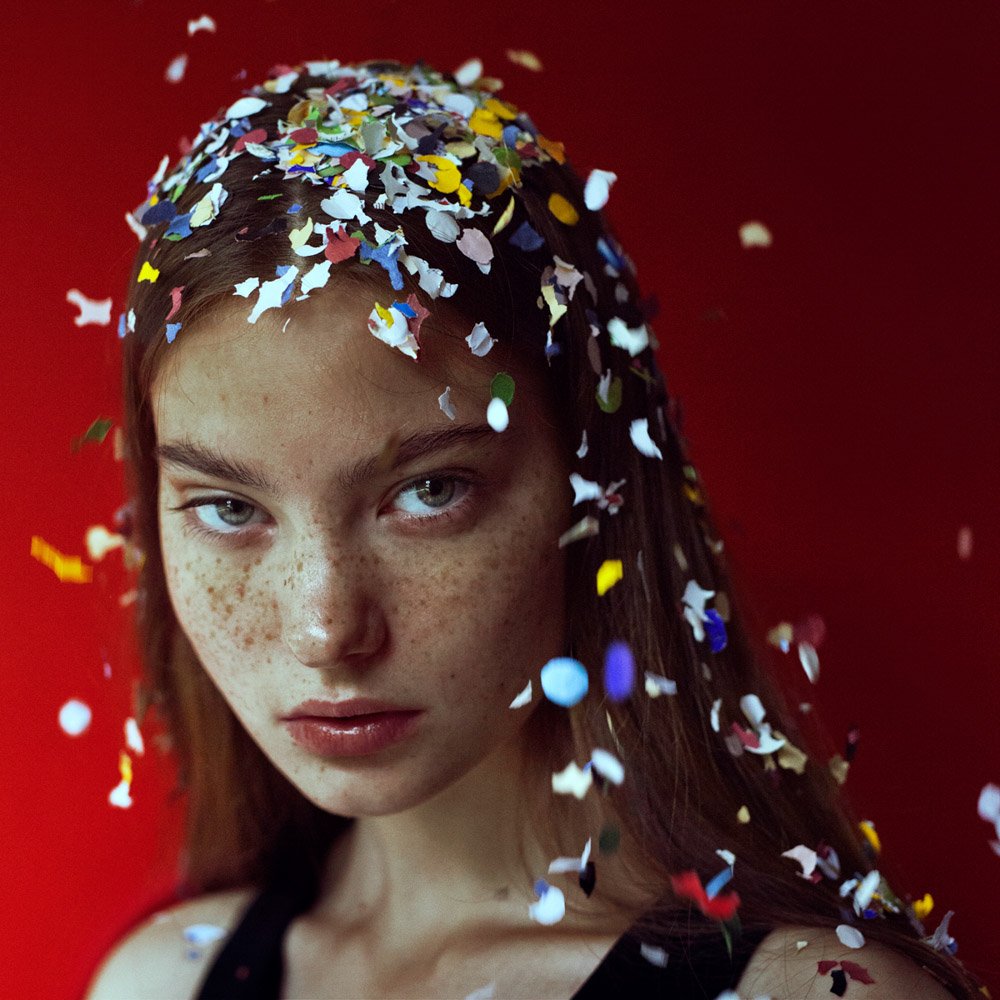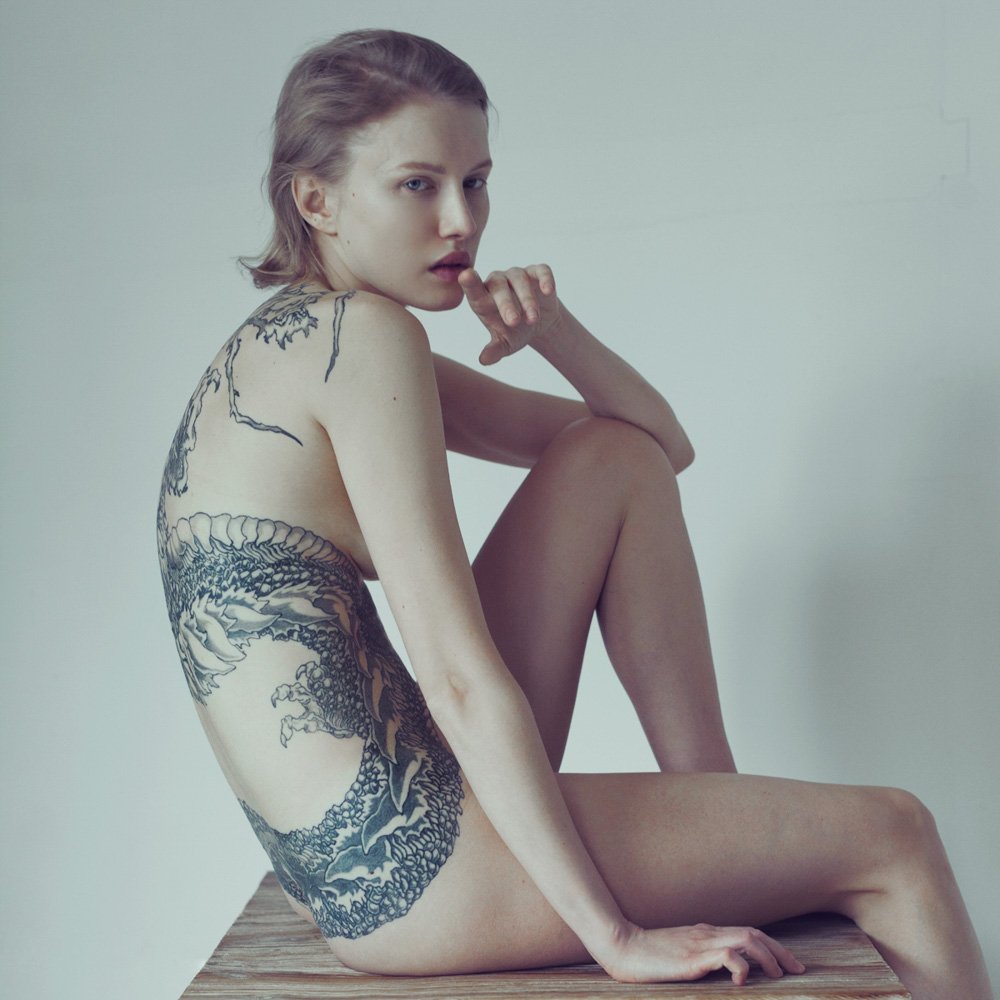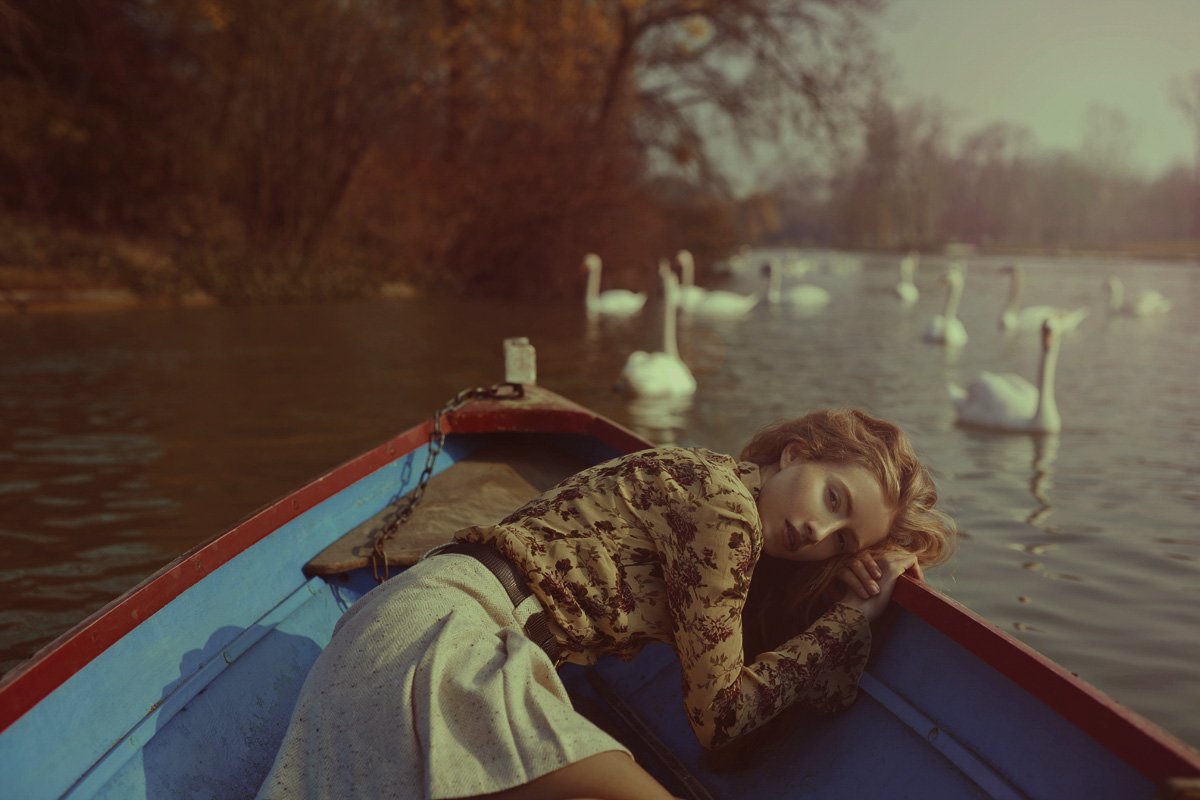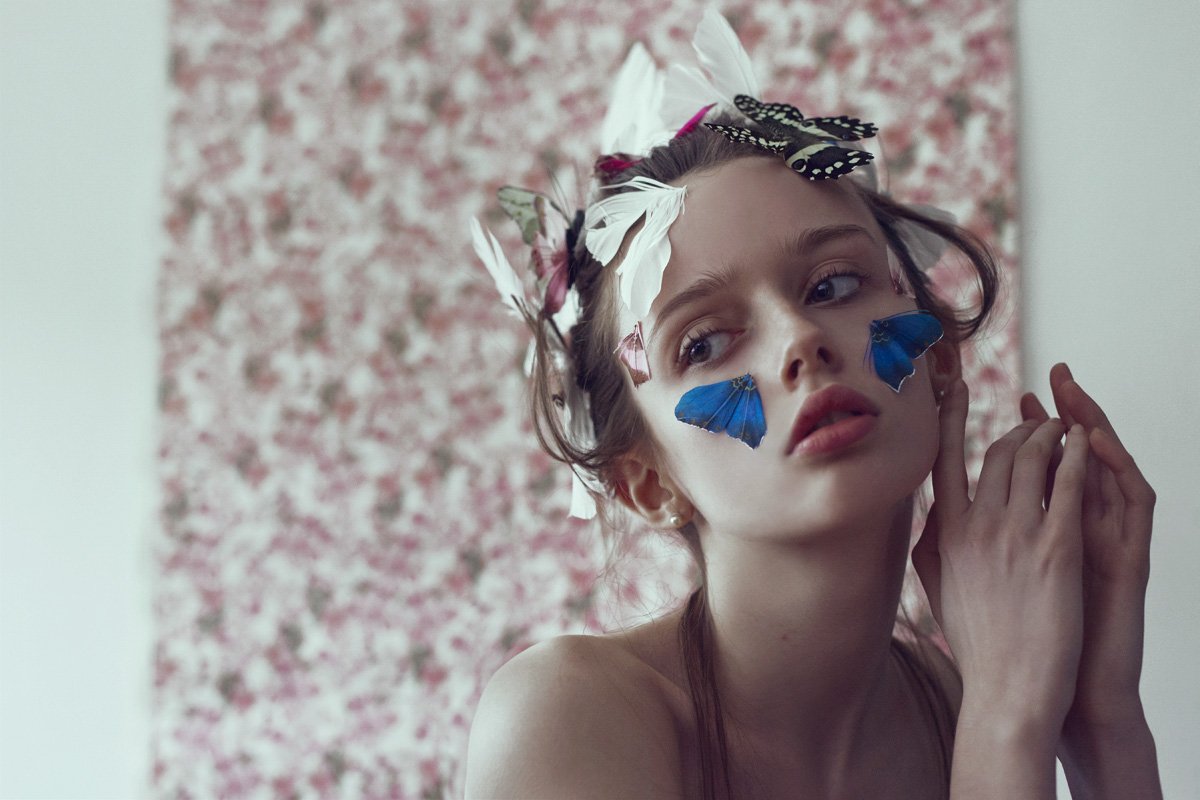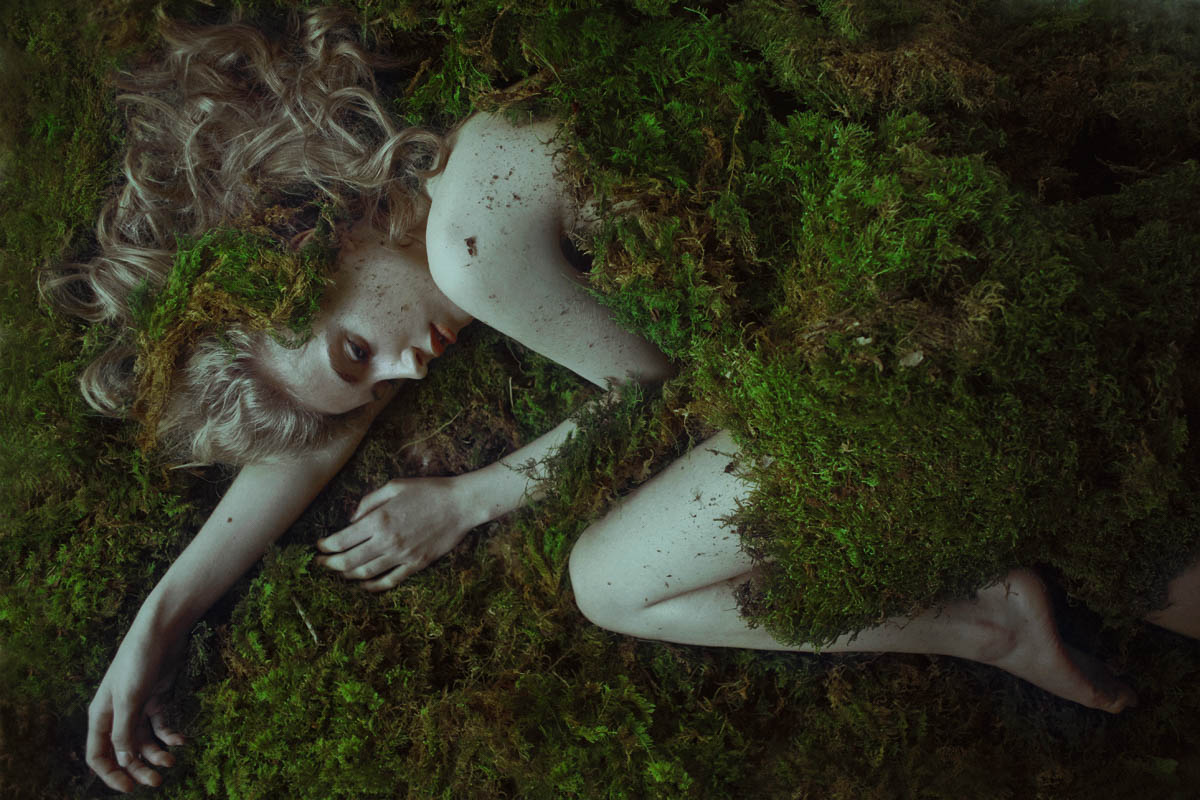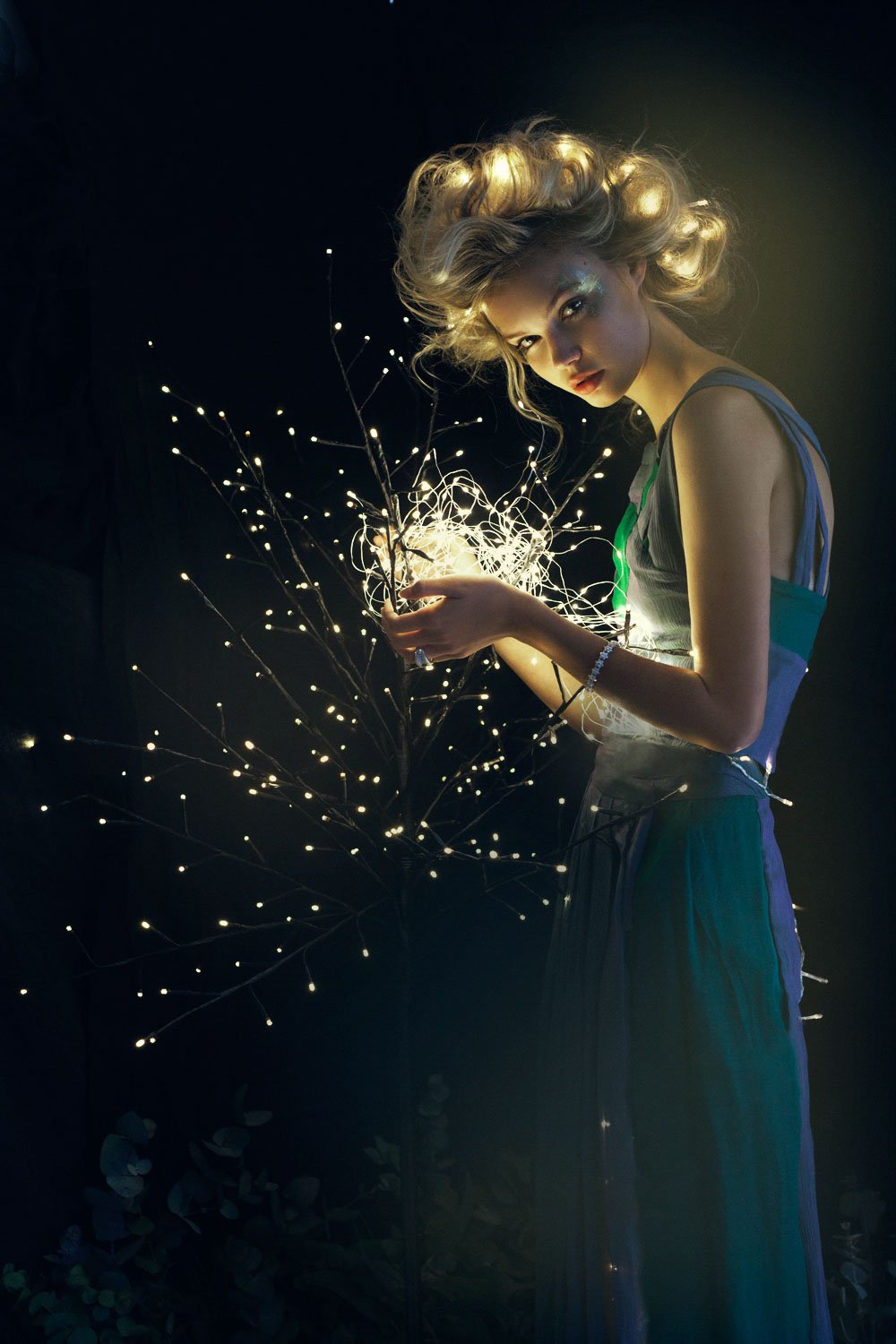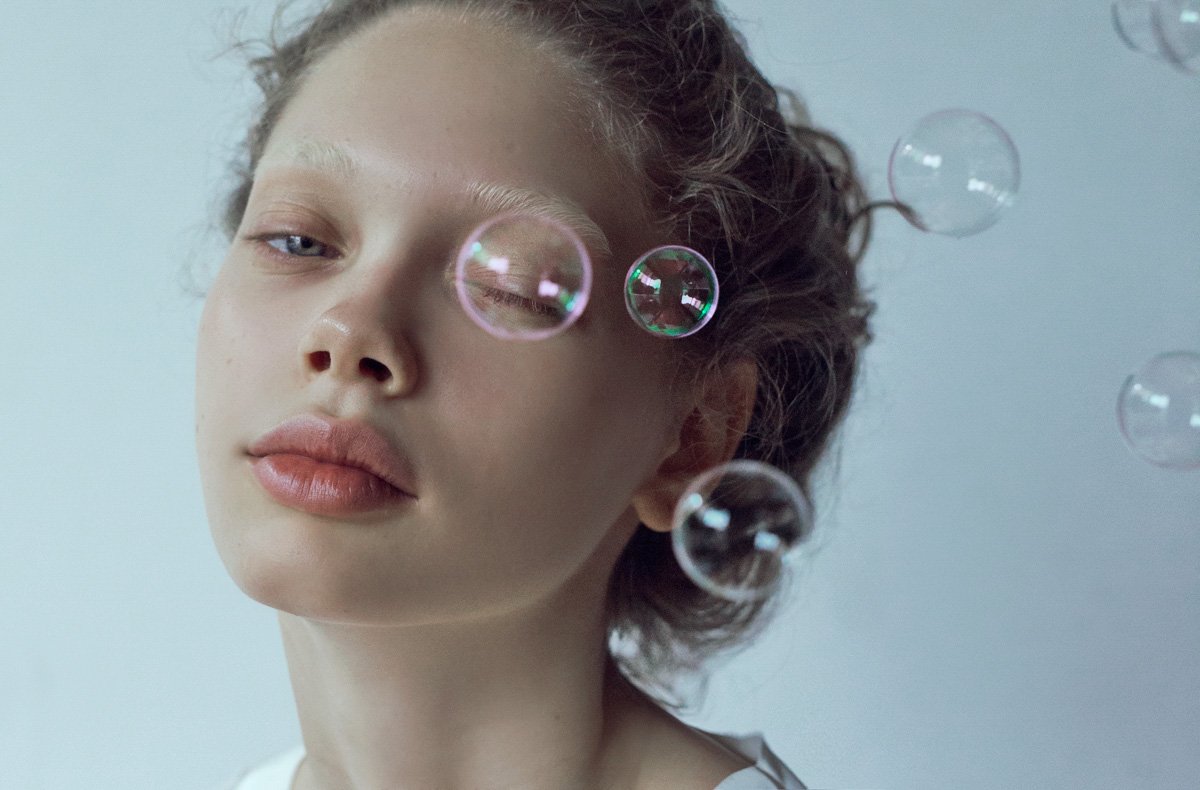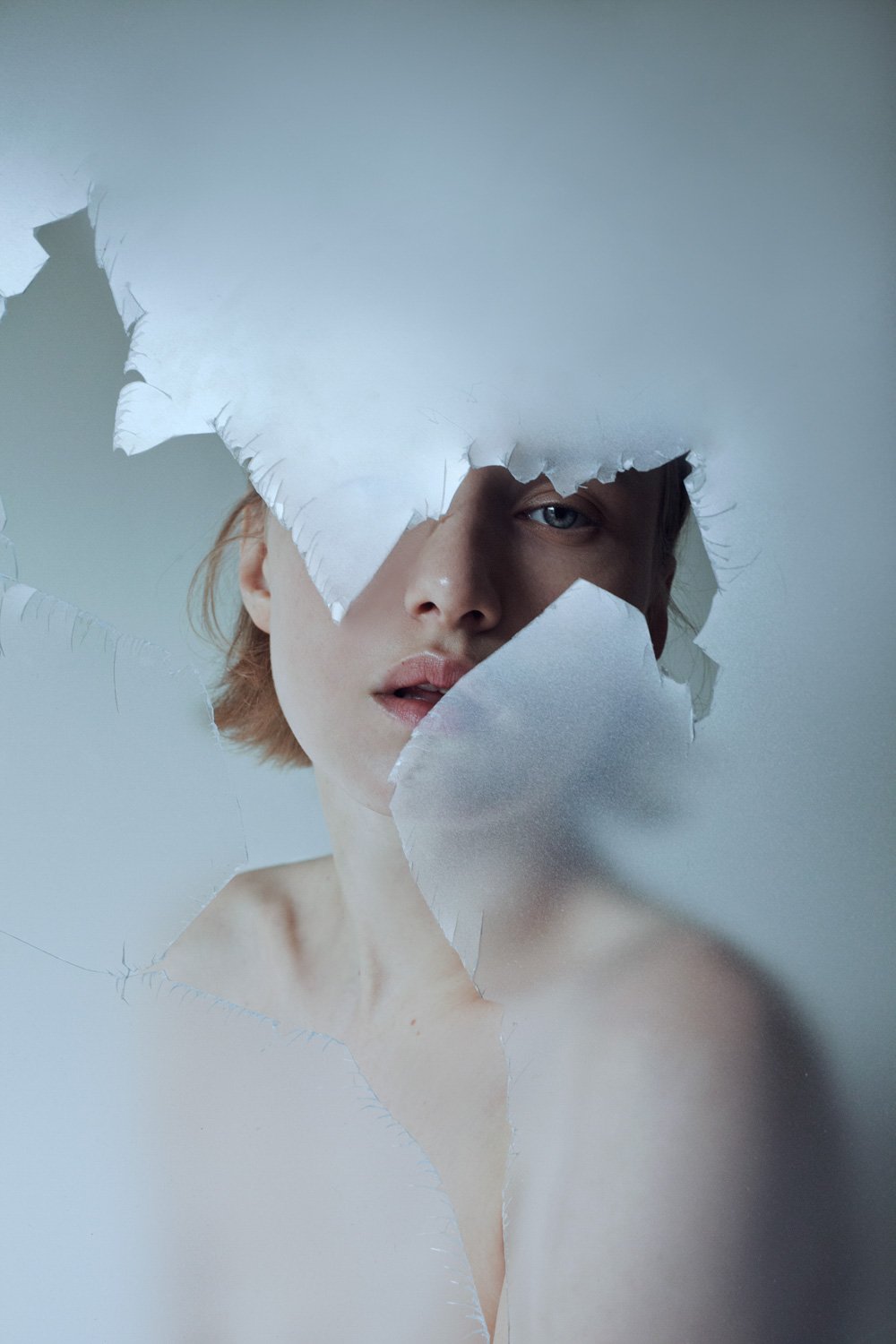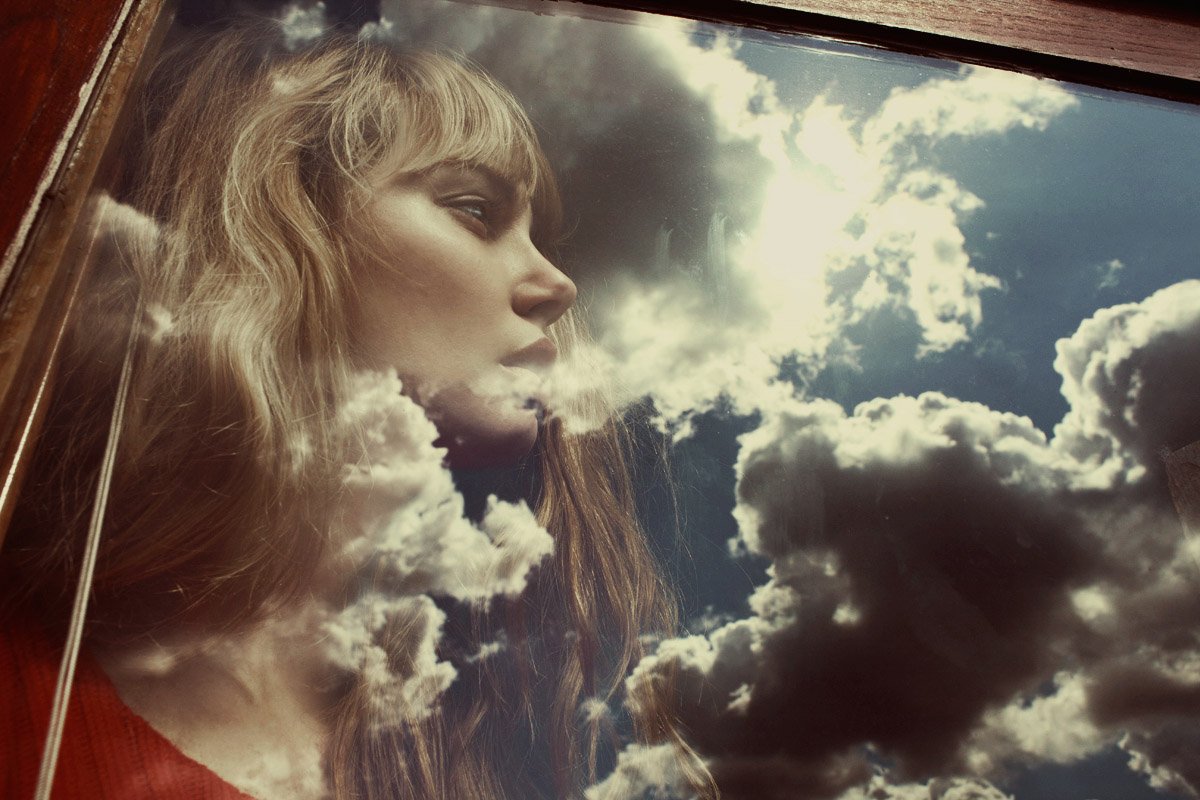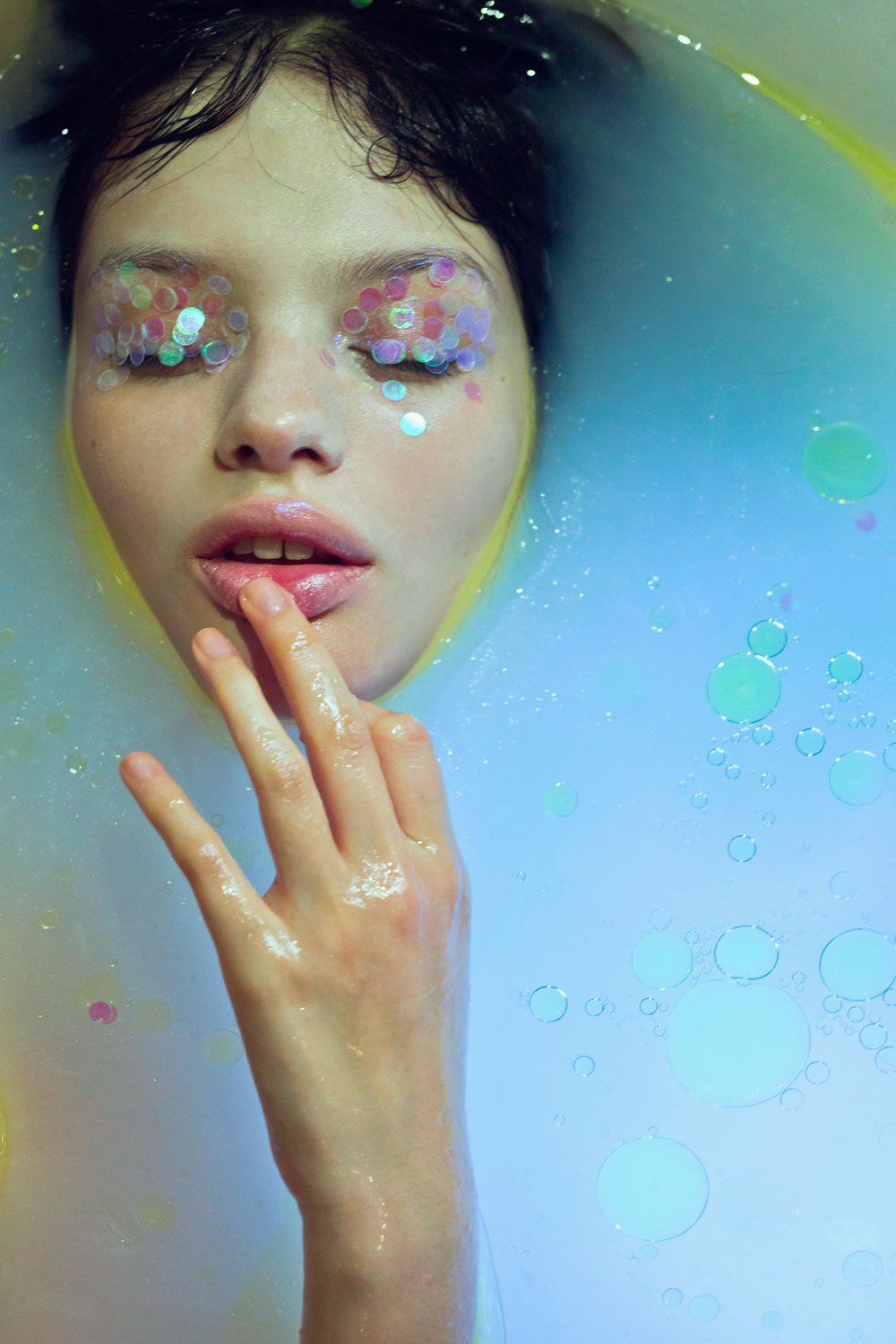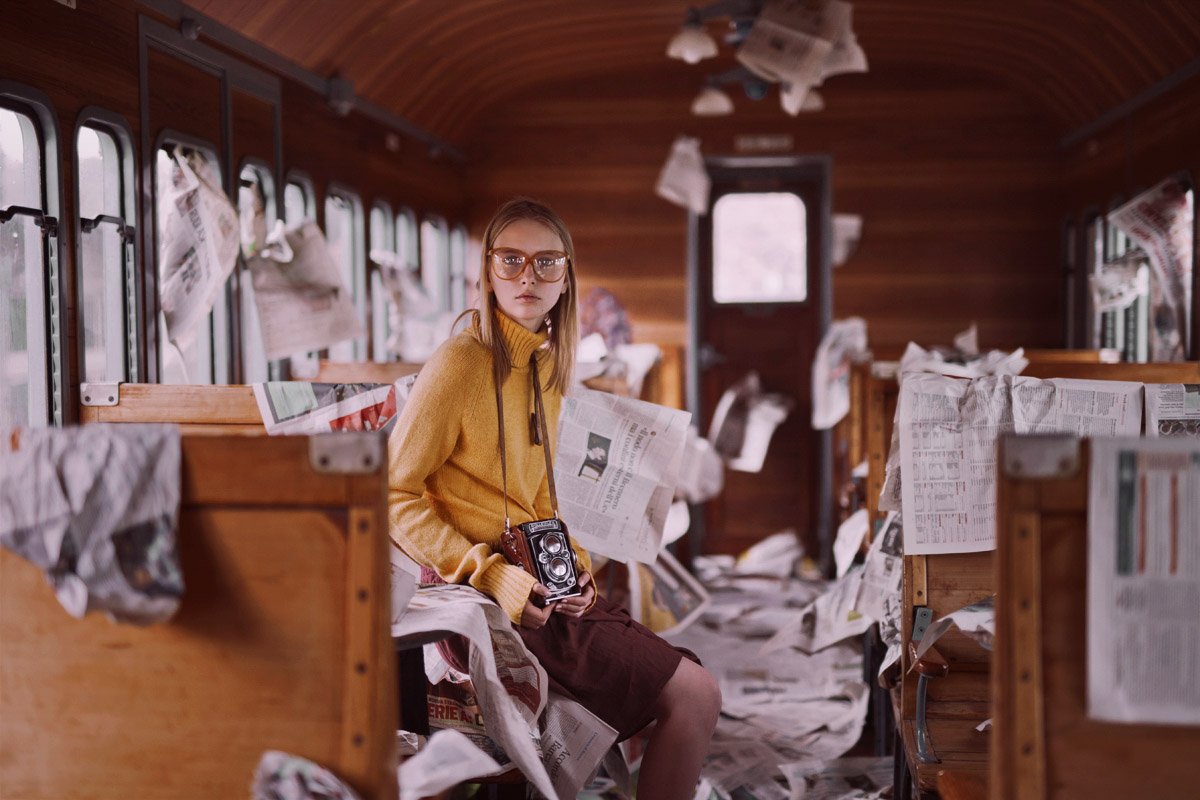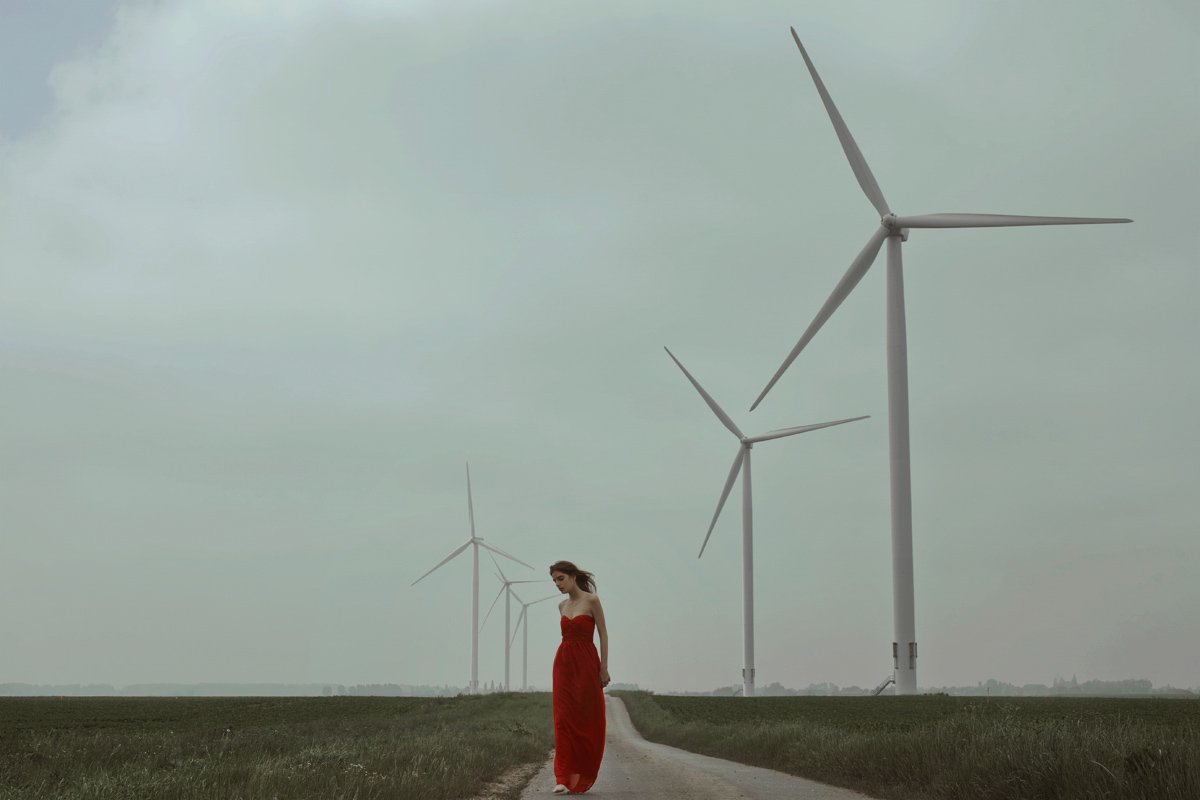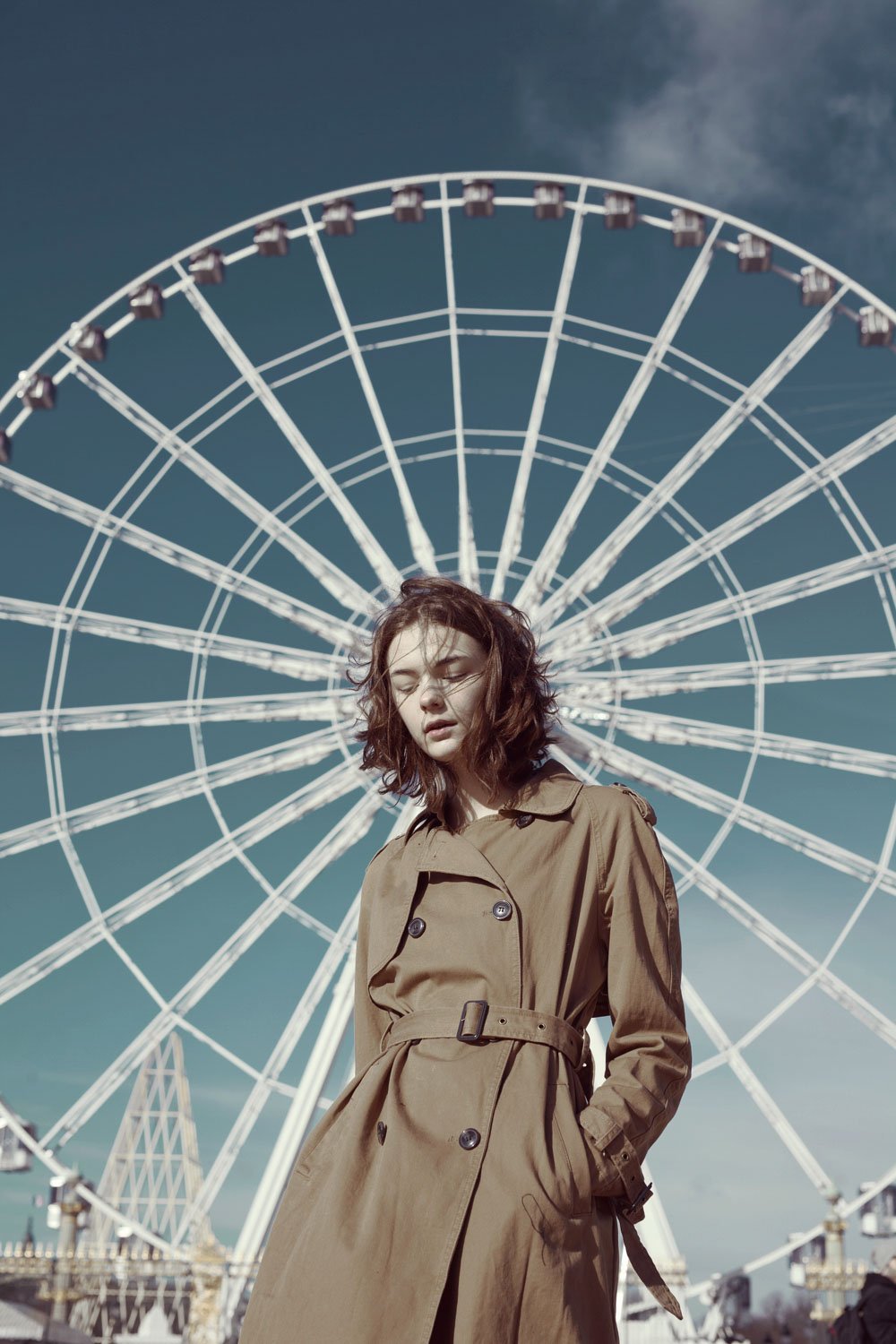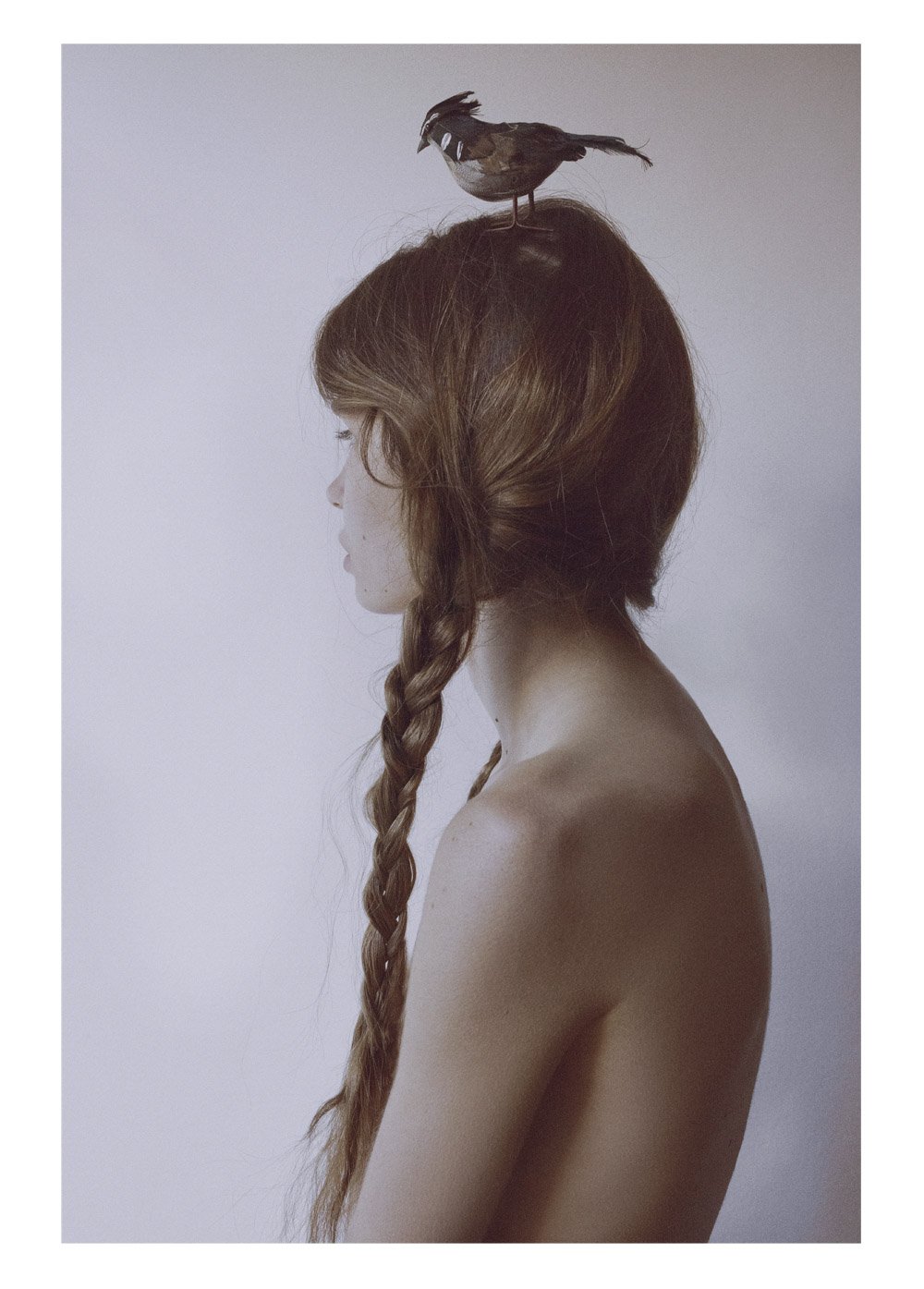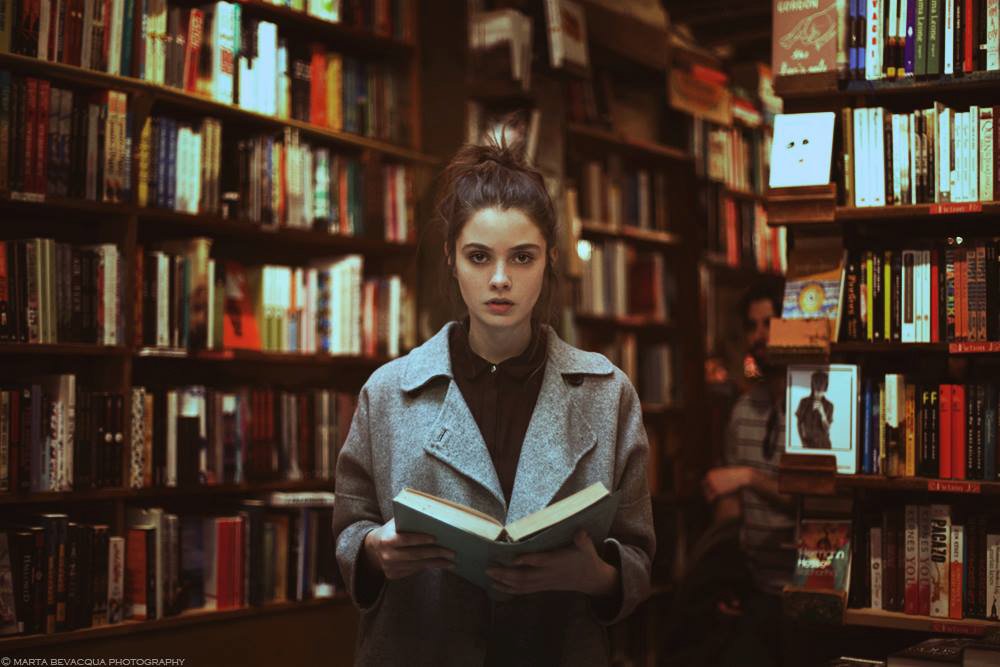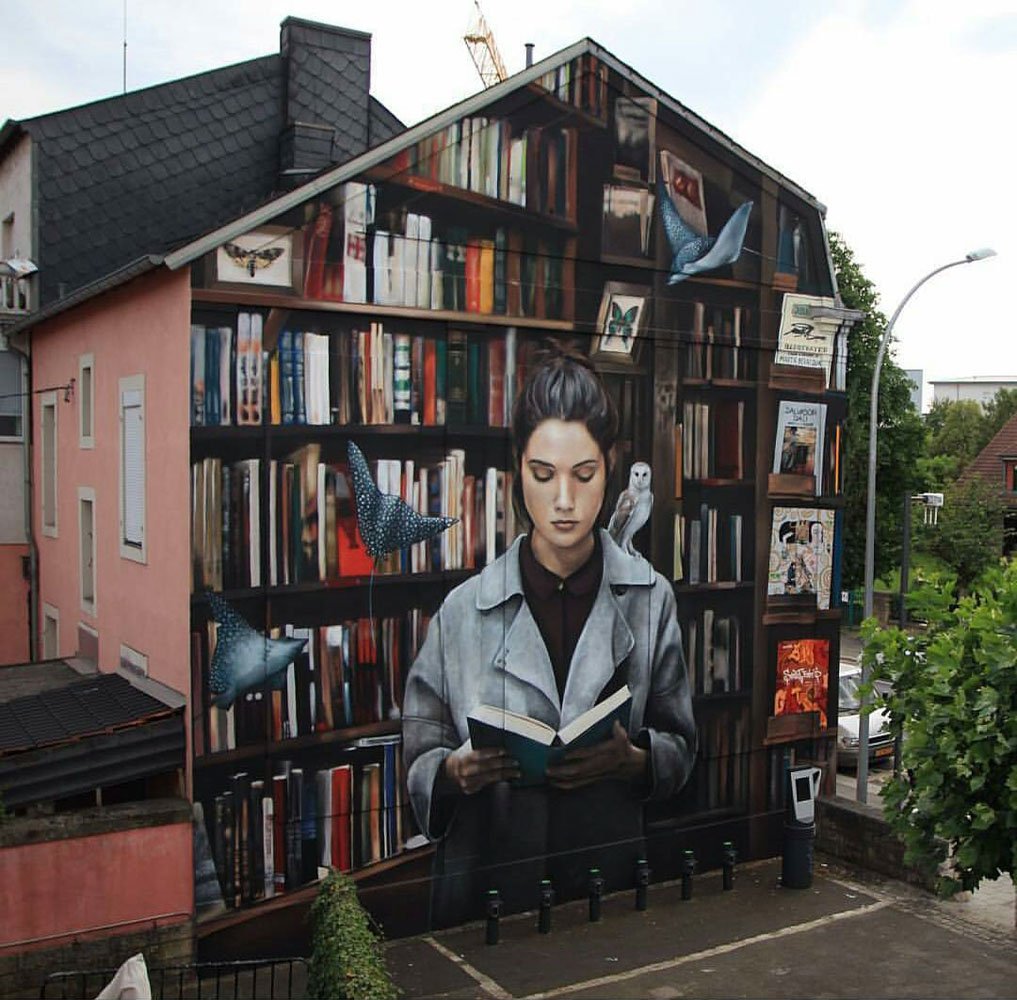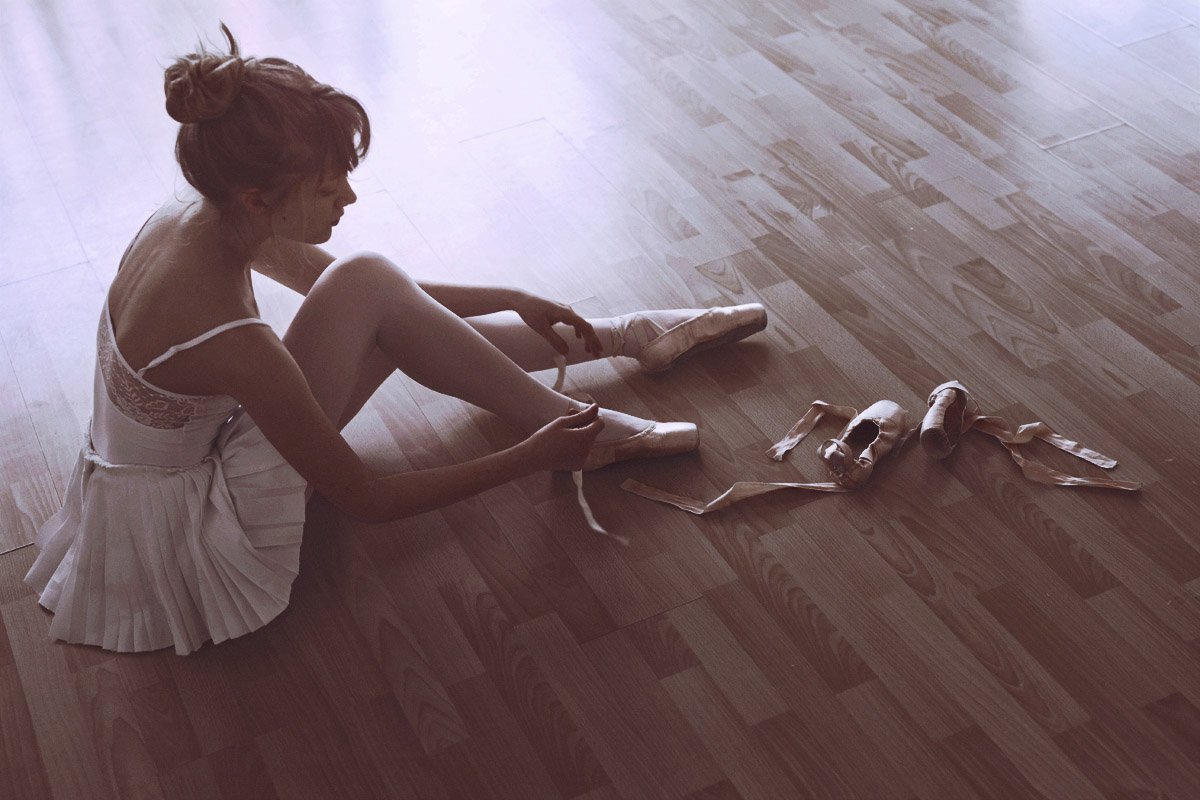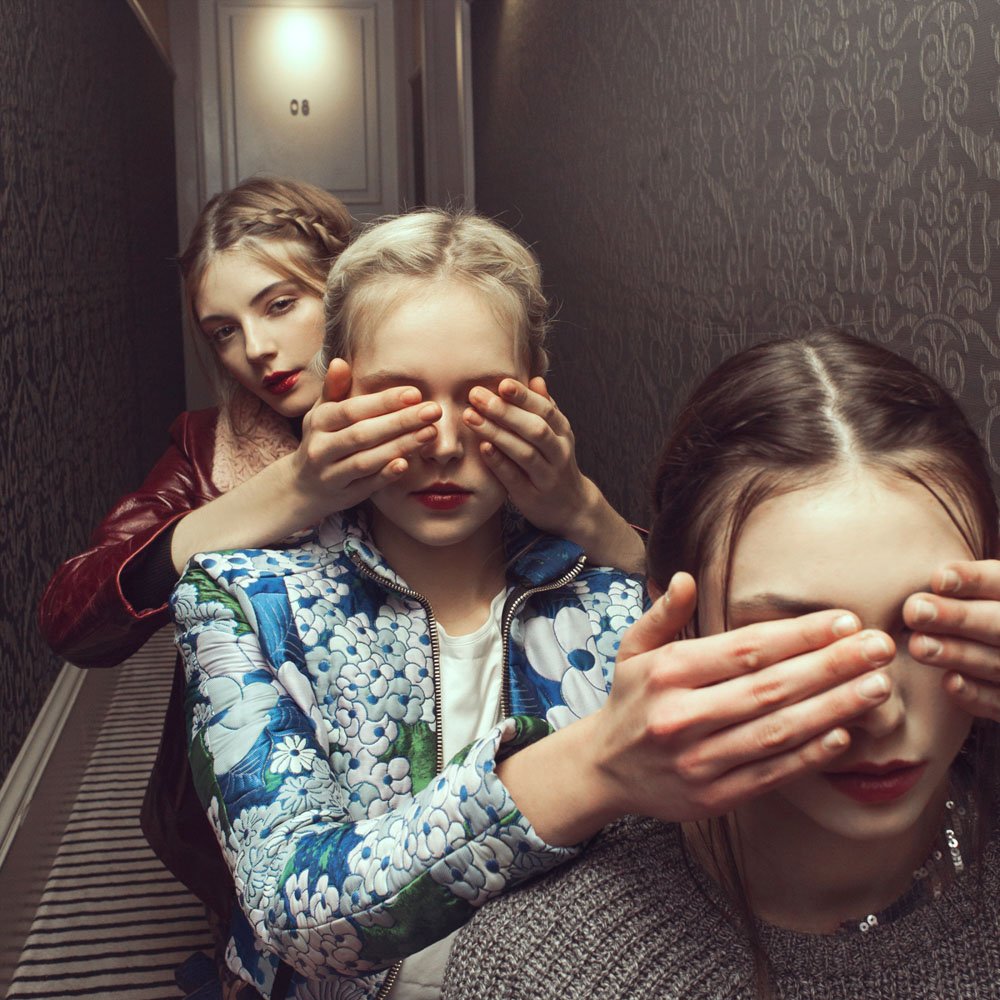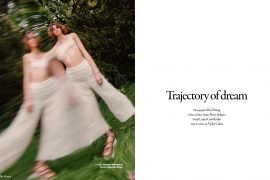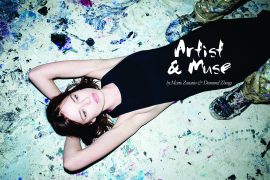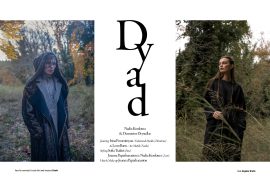Surreal, dreamy and romantic, the aesthetics of Marta Bevacqua are instantly recognisable. Challenging the era of the ephemeral, the imagery of the Roman artist invites the viewer to linger on, spellbound by her storytelling. Drawing inspiration from the pages of classic books, nature and the feminine, Marta Bevacqua weaves enchanting worlds and beckons to the viewer to enter.
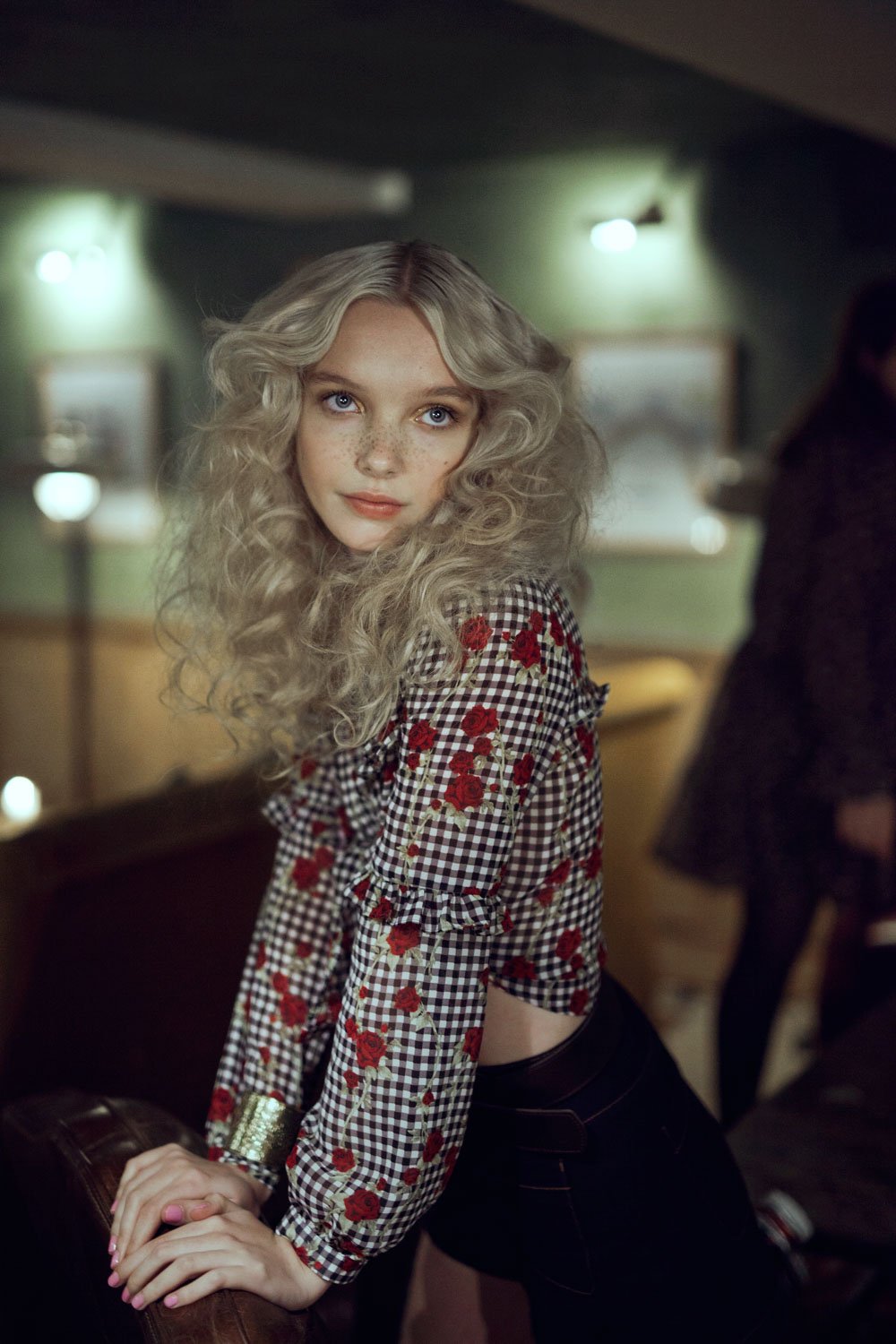
From a red house, surrounded by nature, in the south of Rome, to a flat in urban Paris. The love for nature resonates deeply within your work. How differently do you experience Paris in this regard, and will there be a next step to another city?
Well, I admit it… I miss nature so much! My first time in Paris was quite easy: everything was new and I had so many locations to use, and every time I was walking around, I was feeling so inspired by everything and by the great atmosphere of this city. But after some time, it started to be more complicated: I needed so much to go back to my roots.
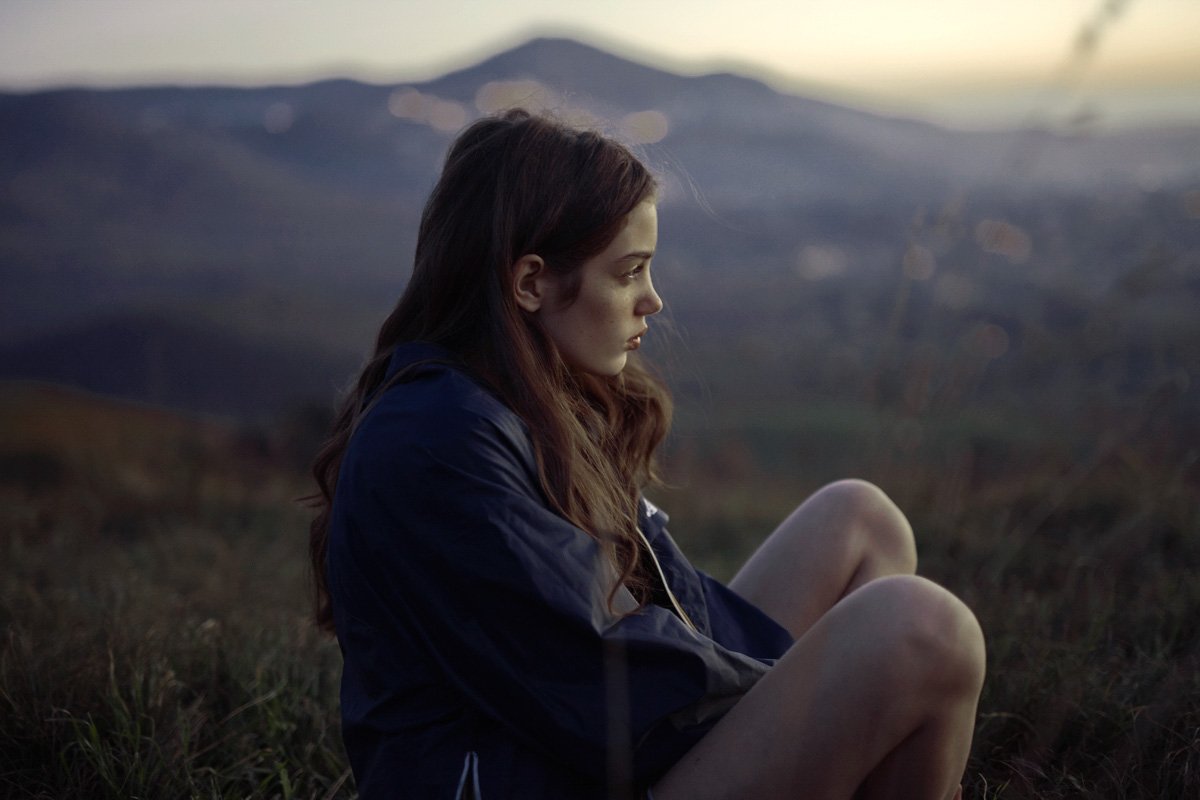
Fortunately, Paris (like many other big cities) has a lot of big and beautiful parks and I go there quite often for my shootings. Nothing will be like living into nature, but hey, I can always take a plane and go back in that red house for some time, to restore myself and find myself again.
Paris offers many things, so I can easily manage all of that. Another city? Why not! For the moment I’m staying here, but I don’t think it will be forever, there is still so much to explore and live and discover.
Favourite spots in Rome and Paris where we might find you?
In Paris: at the park of Buttes Chaumont.
In Rome: at the red house where I grew up and lived most of my life.
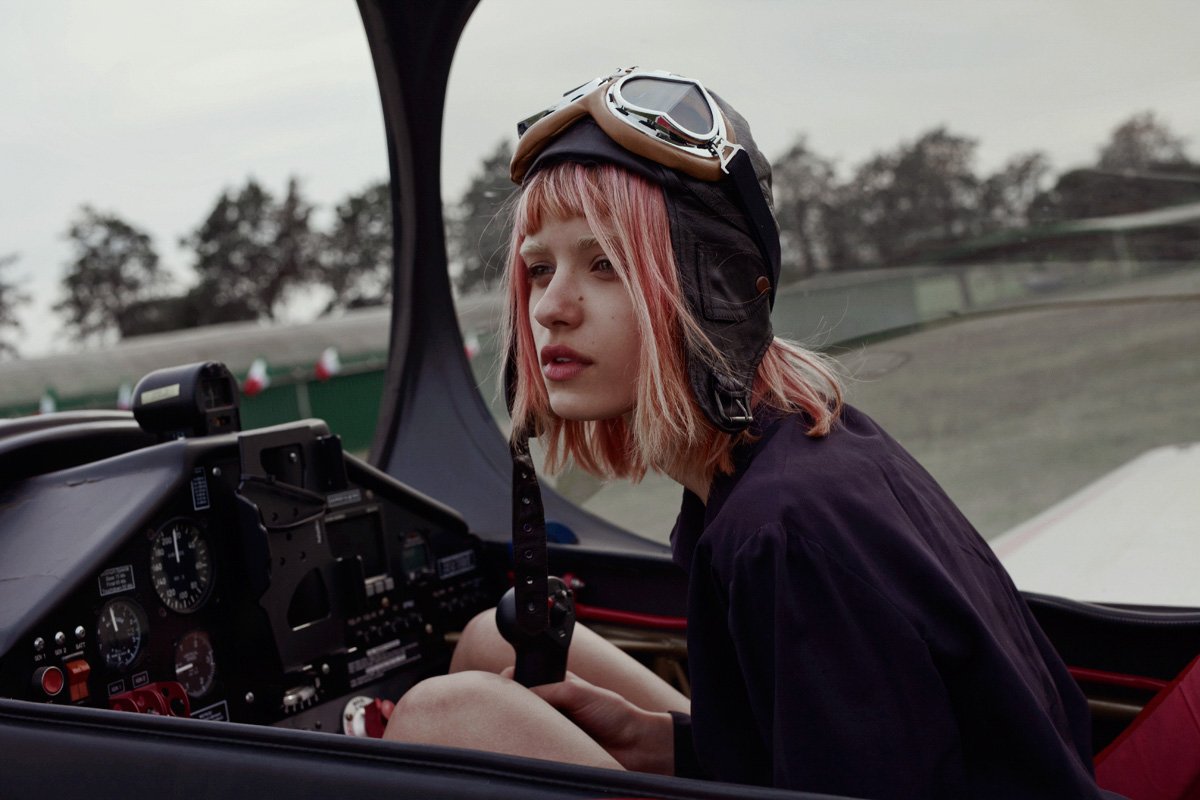
You started photography at the age of sixteen, in the beginning documenting your natural surroundings, the people close to you and the streets. Now you have developed your own distinct dreamy signature style. How was the transition and what is more, do you think there will be aesthetic changes down the path?
The transition came very slowly, step by step. I was not understanding what was going on, I was just taking photographs following my instinct and doing what I always loved the most.
I try to experiment and maybe it’s for the reason that I could develop my style, and I’m sure it will change in the future. Always remaining faithful to my roots and my proper vision, but going on for what concerns themes, techniques and subjects.
Do your pictures feature symbols that should be decrypted, or are most elements implemented due to their aesthetic value?
Sometimes there are some symbols, but they are my symbols, so I don’t know if people can really see them. Sometimes, I just describe a certain feeling or a period of life, or a thought, or just a dream, but I like the fact it’s just my personal thing.
Also, it’s often just an aesthetic research.
Given the dreamy element many of your images exhibit, have you considered delving into older photographic techniques, such as the collodion process, which might add to a more pictorial outcome?
I tried many times to experiment with this kind of stuff. I used film cameras, holga and other lomography cameras, I even tried some lenses from Lomography as the daguerreotype lens and the Petzval. But I must say it… I prefer my “normal” camera, and develop what we can see in the image, instead of using particular techniques.
Your love for literature is profound and you have mentioned how you love classic authors like Hemingway, Salinger, Steinbeck and others. Have you thought of creating images to combine with literally works that you love? The Golden Compass instantly comes to mind as a suitable candidate, which is one of your favourites, right?
Absolutely yes, it’s my favorite. I’m a big reader, I can mention so many books who inspired me so much for my photos. I thought sometimes in realizing some series clearly inspired to one chosen book, but still working on it.
For the moment, I just realised a lot of pictures where books are really present in the scene, and it can be any book.
Your visual focus lies mostly on women, what do you think lies behind the desire of a woman to be portrayed in a picture?
Difficult to say, everyone has own reasons for doing something. And most of the times, I work with professional models… so it becomes more a job than anything else.
And what do you seek when taking a person’s portrait?
Emotions and the power of telling a story.
Many photographers, especially beginners, think that a vast arsenal of photographic equipment is necessary to obtain good images. That it is vital to use expensive studio lights etc, yet your usual approach is quite bare to the bones; a full frame camera, a 50 mm lens and natural light. Everything is affordable. Would you like to speak about this approach?
This is totally true. I don’t think all this gear is so useful to take beautiful photographs. It’s not exactly a choice… I just started like this, with natural light, a camera and a lens, and I always found it very pleasant, I always thought I would not need anything more.
Once I really started to work, I experimented in studio, with artificial lights, also with lights outside and so on. Well, I never changed my mind. There is nothing more beautiful than natural light. The only thing is just learning how to use it in the best way.
What do you look for when casting models?
Particular faces and bodies which speak to me, which make me dream somehow.
How different is the process in your personal shoots, compared to the commercial ones where a whole team, art director, client etc are behind your screen? And how do you balance between a client’s needs and your own artistic expression?
It’s quite difficult to balance it as I wish, but most of the time it’s possible, just always thinking about the client’s needs. It’s all about balancing between your vision and the client’s vision. But yes, personal shots and commissioned shots are very difficult (thankfully, not always).
Do you ever become disappointed with photography?
Yes of course! I did so many shootings, I think it’s normal. On the web, you can’t see all my shootings, some of them really went not how expected and yes, sometimes I had problems with people. But it’s normal, it can’t always be perfect. And it’s also thanks to these moments that I feel I can grow up and learn new things.
What is the worst criticism you have encountered?
I had so many that I really don’t know… maybe nothing so big which I could not forget.
Have there been specific people who helped you in your career?
Yes of course. My parents, my sisters and all my family. And a professional advertising photographer based in Rome (Daniele Fiore) who really helped me through the years.
Your work is popularity in social media. Could you share your opinion about the fast visual culture that is being shaped?
Social media are very important nowadays. I am contacted even for important jobs through websites and discovered by people who can give me possibilities and job opportunities. Sometimes I can’t stand it anymore, but then I understand its worth it, with no doubt.
In the past you were inspired by others, now you to have become a influencer for thousands of people, who look up to your work. How does this transition feel?
How does it feel? I’m grateful every day, even if sometimes it seems quite unreal. I don’t think about it so much, I just thank all the people every day and stop.
Mural by Mantra Rea (Esch-sur-Alzette, 2016) based on the above image by Marta Bevacqua
If you could work with one person who would it be?
A model? Gemma Ward
Which is your greatest fear?
Blindness and having no more ideas.
What is something we do not know about you?
That I would love to go and live in the north pole territory OR work in a ranch with horses and cows and stop with photography (but only if I could live and do one of these 2 things…)
How would you define beauty?
Something which never has to apologise to anyone.
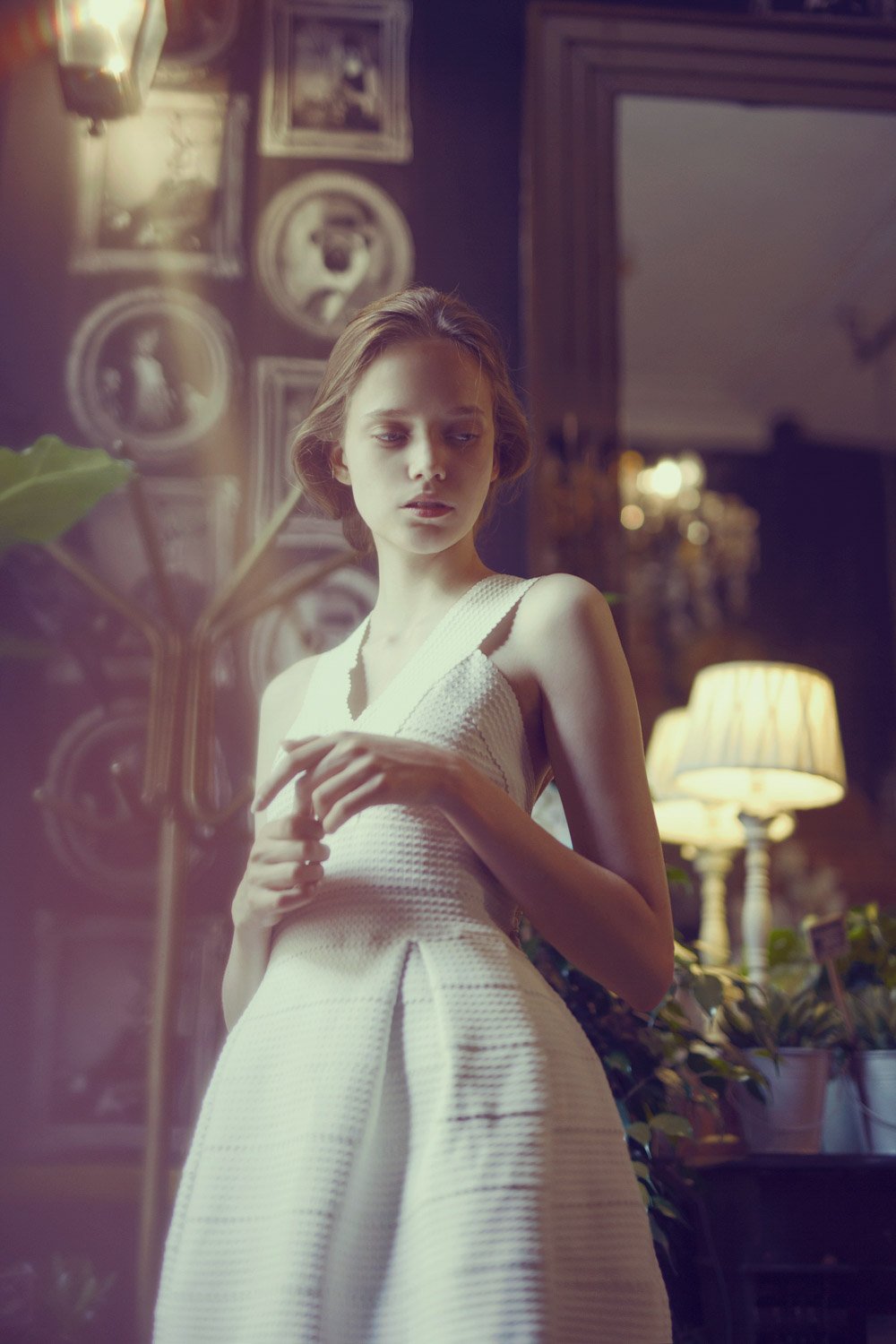
Is there any talent or superpower you would like to have?
I would LOVE to paint or draw amazingly well.
What would you do if you were invisible for a day?
Just disappear.
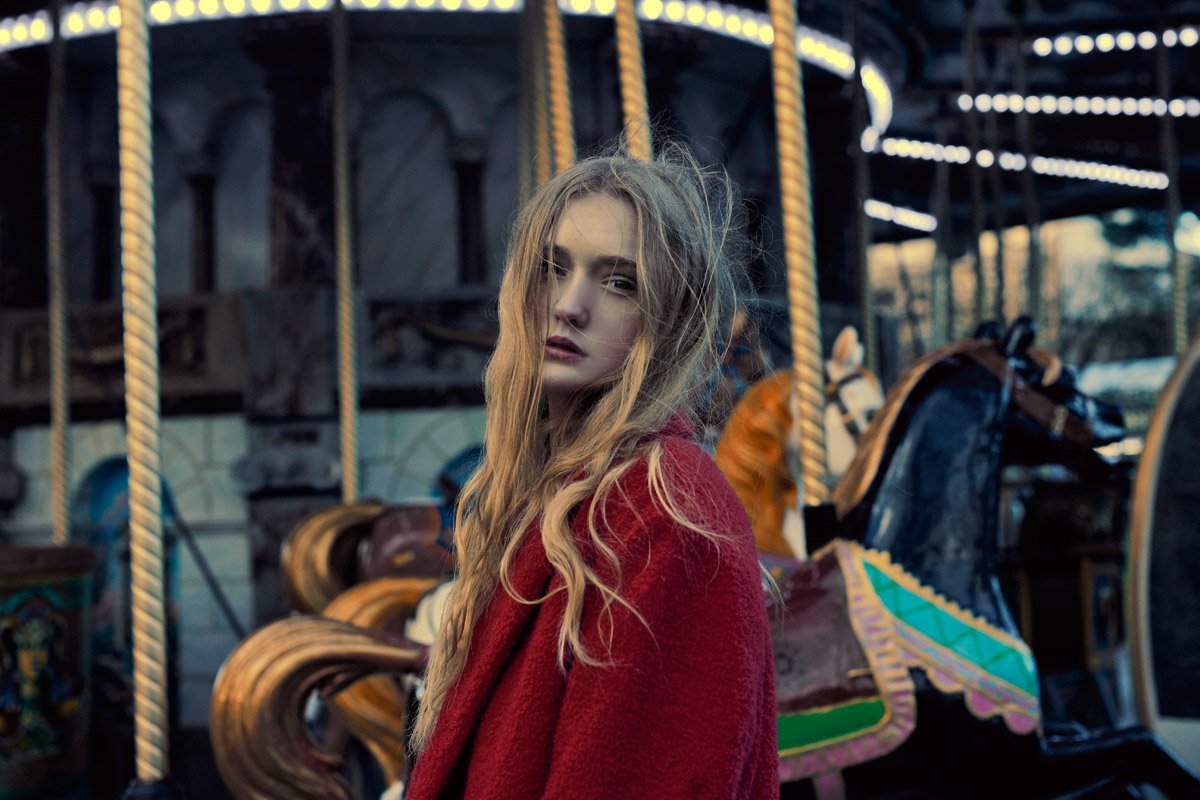
In the end of the day, what makes you happy?
An aperitif with my boyfriend and my friends .
[separator type=”thick”]
You can view Marta’s captivating work on her [website] and be sure to follow her on social media for regular updates [instagram] [facebook]
Interview by Demetrios Drystellas

